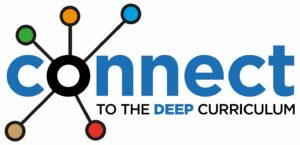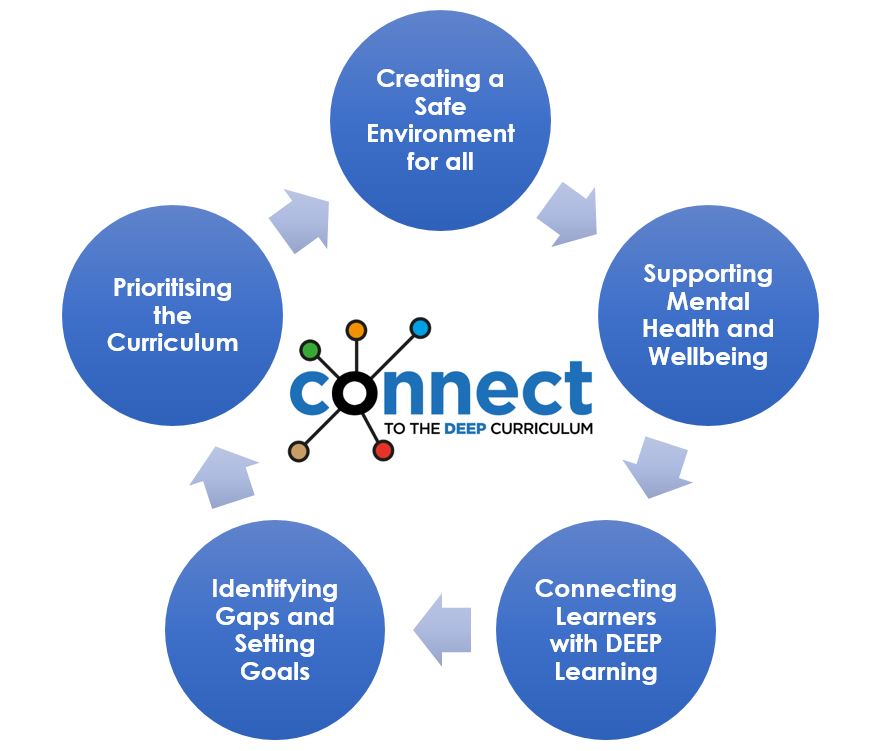
Pupils experiences of learning have differed over the past couple of years. In addition, the development and use of technology to support learning has changed. As a result, we are now in a position where learning in the classroom can be more easily and effectively connected to learning at home. Pupils can now access lessons via our online platform enabling them to access learning independently when they are not in school, allowing us to more effectively connect to the DEEP curriculum provision in place. As we continue to respond to the changing needs of our pupils, we ensure that all decisions made focus on connecting the different aspects of our curriculum to improve pupils’ learning.
Key principles:
A curriculum which focuses on what is necessary in the short term to:
- Ensure pupils and staff both are safe and feel safe.
- Support and promote mental health and wellbeing of pupils and staff.
- Engage and motivate pupils to learn and re-engage with parents and the wider community.
- Identify significant gaps and provide learning sequences and opportunities which address them.
- Prioritise the curriculum content which is most important for pupils.
Our safeguarding ethos and policy must remain at the core of our provision and safeguarding should, as always, remain a thread throughout the curriculum.
Connecting Learners with DEEP Learning:
- Identify, formally plan, and use every opportunity for individual and collective recognition and positive affirmation to rebuild the sense of place and purpose.
- Plan in time to revisit agreed principles for effective learning and the routines that accompany them.
- Promote purposeful opportunities for talking and listening in curriculum planning.
- Plan for all children to experience success in their learning as early as possible. Nothing builds confidence so much as ‘getting it right.’
- Use assessment for learning strategies to judge when pupils are ready to embrace challenge, choice, and more autonomous ownership of learning and learning goals.
- Steadily and incrementally raise expectations to stretch and challenge pupils’ autonomy.
Identifying Gaps and Setting Goals:
- The assessment process is vital. Deciding what to assess and when to assess will be critical in helping to close gaps in learning. Assessment for learning, and day to day assessment of pupils’ learning, will be crucial in informing planning.
- Consider the CRAFT approach:
Condense the curriculum (what must they know/be able to do)
Reflect (give time for pupils to reflect on their learning)
Assess (what do they know/can they do? Formative assessment)
Feedforward (plan curriculum opportunities to address needs/gaps)
Target Set (agree priority areas for individual pupils)
- Revisiting curriculum maps for all classes and for individual pupils, particularly those with SEND to ensure they are still fit for purpose.
Prioritising the Curriculum:
- Look for meaningful opportunities to address gaps in basic skills as often as possible.
- Decide what assessment information is crucial and how this will allow the successful planning and delivery of the curriculum for different needs classes.
- Within departments, led by Curriculum Leaders, there are opportunities to adapt the curriculum to respond to emerging needs or situations as they arise.

